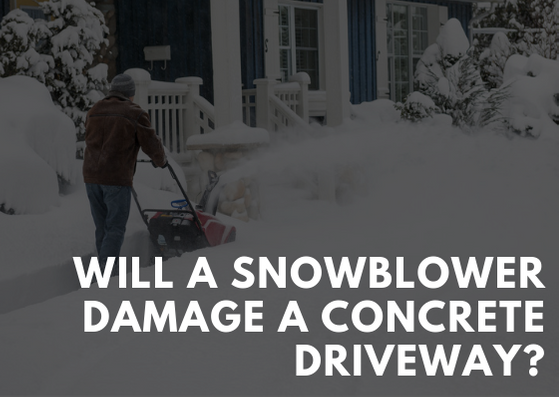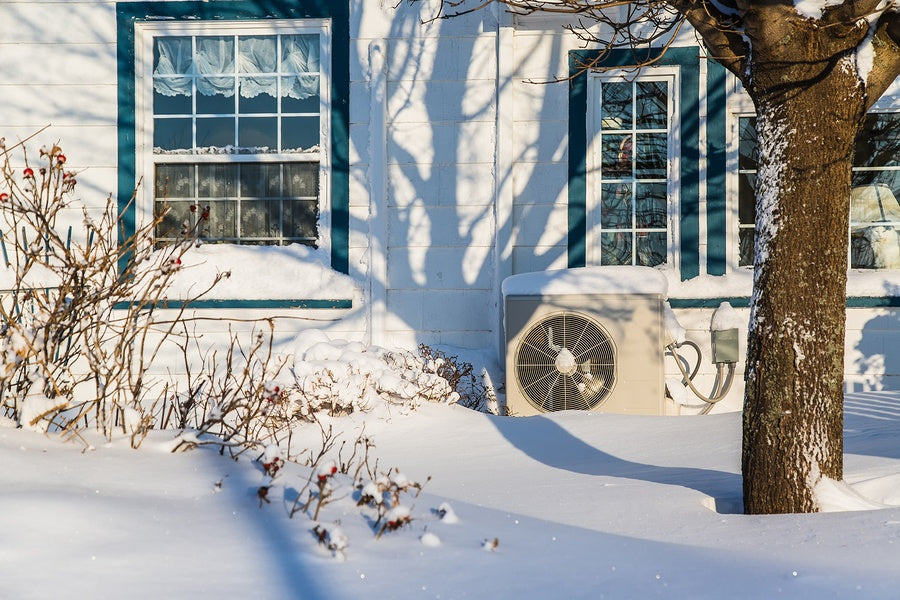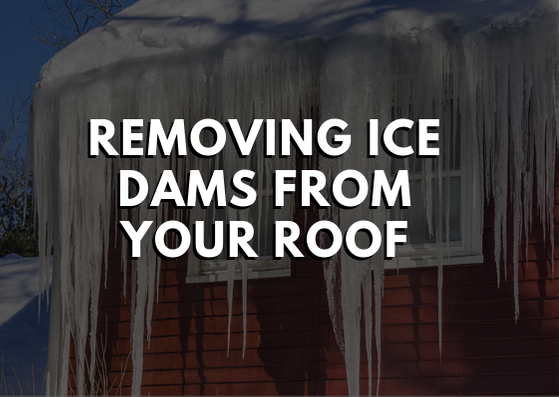
The driveway is one area of your property where snow removal is an urgent need. However, clearing it away is a lot of work and you might be tempted to leave the snow and simply drive over the accumulation. However, if you take this approach, you face the potential for compacted snow that could turn into ice.
When you’re searching for the best option for clearing your concrete driveway, it might surprise you to learn that some common snow removal methods can actually do more harm than good. For example, did you know that rock salt can significantly damage a concrete driveway? Its acidic nature increases both the rate of deterioration in concrete and water retention, which causes cracking, chipping and flaking.
Shoveling snow is always an option, but an unattractive one when you consider the risk of injury. Approximately 11,000 people are hospitalized annually due to snow shoveling-related injuries including back injuries, head injuries, fractures, heart attacks and strokes.
When you consider the potential damage and risk of injury for two of the most common snow removal strategies, it’s definitely worth considering alternatives. One possibility is snowblowers, an option that, at first glance, seems like a relatively fast, safe, and possibly fun way to clear a driveway.
However, since we’re considering alternatives with the goal of avoiding costly repairs, we have to ask this question: Can a snowblower cause damage while removing snow from a concrete driveway?
To answer this question, let’s first consider how snowblowers work.
Snowblower 101
Snowblowers come in various sizes and capacities. They’re classified as single-stage, two-stage, and three-stage. A single-stage snowblower is actually an “electric snow shovel” and works by throwing snow out of the way to the side, usually about 10 to 20 feet. This type of snowblower is good for areas with light to medium snowfall.
Two- and three-stage snowblowers collect snow into a chute but also include an ‘impeller’ that actually blows the snow out of the chute. These are more robust, more expensive, and are designed for areas with heavier snowfall.
How they work
Snowblowers are pushed through snow and ice and are either powered by gas (as larger models typically are) or electricity (in smaller models). Larger, more robust blowers are usually self-propelled and they all work by using an auger.
An auger is a set of blades in the front of the blower that, in small, single-stage models, is either plastic or, more typically, metal. These blades rotate when the motor is switched on and work to dislodge snow and ice by lifting and breaking it up.
Particularly with larger models, the advantage of using a snowblower is a faster clearance of wider paths when used on large, flat areas. They’re best used with at least two inches of snow on the ground and three-stage snowblowers can send snow as far as 50 feet away.
A major disadvantage of using a snowblower is that clogging is common due to unremoved or unseen debris such as rocks, sticks, and newspapers. More than 4,000 emergency room visits happen annually due to snowblower injuries and most of these are from people trying to dislodge clogs with their bare hands!
Other disadvantages to this snow removal strategy are that snowblowers are typically expensive pieces of equipment that require upkeep and storage during the rest of the year.
Lastly, when it comes to our original question, there is the risk that a concrete driveway could sustain damage with the use of a snowblower. This damage could occur by the metal auger blades coming into contact with the surface of the concrete if snow levels aren’t deep enough. As well, rocks can cause chipping to the surface of a concrete driveway after having been “kicked out” by the rotating auger blades, particularly with larger more robust models.
When it comes to clearing your concrete driveway to assure safe passage to and from your home, allowing snow to accumulate to the point where a snowblower would be 100% safe to use is not always a good option. Simply put, sometimes you need a clear driveway right away.
Here are some alternative methods to consider for removing snow from a concrete driveway:
- Chemical de-icers such as calcium chloride, magnesium chloride, potassium chloride, urea, liquid potassium-acetate, and calcium-magnesium acetate. These de-icing alternatives have advantages such as being effective at lower temperatures, not causing the type of damage that rock salt causes, and being eco- and plant-friendly.
- Hiring someone else to do it, such as a professional service or neighborhood youth.
- Traction-boosting materials such as sawdust or sand can be combined with a de-icer to keep a driveway relatively clear and improve traction.
- Heated driveways are an expensive option but come with advantages including convenience, safety, low to no environmental impact, and improved property value.
- Heated snow melting mats, especially heated driveway mats, are an energy-efficient, low maintenance, and convenient option. They are as efficient as a heated driveway but without the high up-front cost and complicated installation — and they’re specifically designed to withstand the weight of a car.
Heated snow melting mats plug into a standard outlet using a moisture-resistant cord, and can melt snow and ice in a matter of hours or minutes depending on the
level of heat and the amount of snow.
While snowblowers are a fast and efficient way to clear snow, they may not be the best option for your concrete driveway. Given the cost and effort involved in repairing a driveway, the safest and smartest route for removing snow from a concrete driveway would be to consider some of the alternatives listed above, especially a “set-it-and-forget-it” option such as a heated snow melting mat.


